IMDb meta-data is runtime 1 hour and 18 minutes, rated 5.3 by 1231 cinemitizens
Verdict: Better than many of its kind. Atta girl!
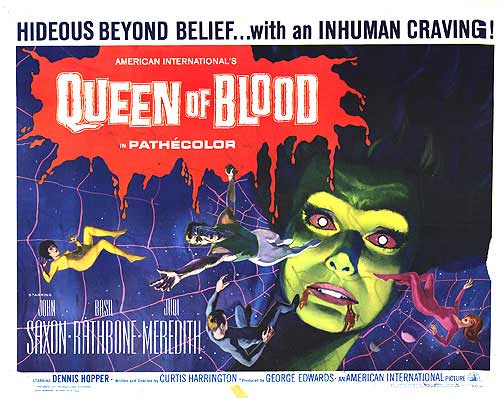
In distant 1990 lunar travel is routine and on Moon Base One plans advance for flights to Venus and to Mars. On earth all is peace and goodwill. Yes, fiction alright.
Sherlock Holmes, clipboard in hand, runs the show. Carmine Orrico will board the Venus flight and Judi will go to Mars. Judi and Carmine are an item. Her flight will be first and Carmine accepts that with good cheer and moral support. Already there are differences from others of this ilk. The woman is an astronaut, not a nutritionist, coffee bearer, or object of either sexism or comic distress. She is just there to do a job. Moreover, Carmine is urging her on.
Wait! Before the off there comes into this carefully planned (see clipboard for details) program a message from the stars. SETI answers. Dit-dat-dat-dot it goes and by consulting the screenplay they can decipher this static as: ‘Hello! Our ambassador is on the way in a spaceship.’
Anticipation moves Sherlock to give a speech. Mercifully brief. Wisely he does not tell Faux News.
Next thing another message arrives. This one is a video log. Check the release data above. Somehow these star travelling aliens have managed to transmit a smartphone video log to the Moonies.
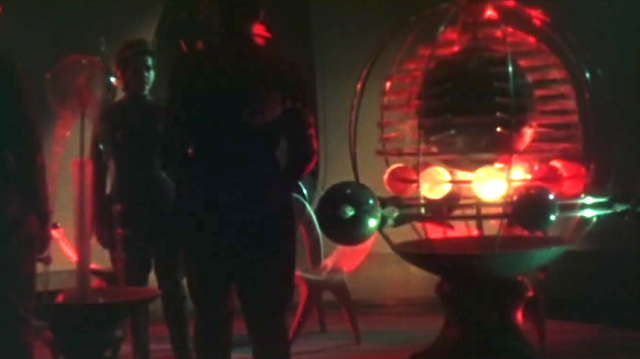 The alien ship.
The alien ship.
It is exotic indeed, this video. It is from the ambassador-bearing ship which, by relying on Apple Maps hit Mars instead of Earth and has crashed. ‘Help!’ is this second message.
All hands to the clichés! They launch the Mars rocket first and Judi goes. Carmine mopes. Of course things go wrong. then Carmine tanks up his rocket to go to the rescue. No Apple maps for him! It’s Rand McNally or bust!
Meanwhile, Judi and company have found the alien ship. More moody, exotic interiors, where they find one dead green skin and another barely alive whom they cart to their damaged ship. Humanoid it seems. More so than most Republicans in Congress. Female it seems with a beehive hairdo, sort of. Let’s call her Queenie for reasons to be explained.
She revives. Easy Rider nurses her back to health. So he thinks. Meanwhile she examines the menu. By now Carmine has arrived. We have a full complement on the spaceship of Otranto. But not for long.
Queenie dilates her eyes and Easy Rider falls at her feet. He is the first course. Yum! Yum!
The fraternity brothers loved what came next.
Captain Science, Carmine, and Judi find Easy Rider deceased. Queenie is still licking his blood from her lips.
Hmm. Captain Science is not sure she did it. He is obtuse enough to be a professor. ‘Of course she did it,’ shouts Carmine! Grudgingly Captain Science admits she must have. But he says — get this — ‘We cannot judge her!’ ‘What [bleep, bleep],’ shouts Carmine! ‘We sure can!’
It was all too much like a cultural sensitivity training course, or worse, a snowflake seminar.
‘No, no,’ says Captain Science. ‘Murder and cannibalism are just her cultural ways which we must respect.’ Carmine proposes that she respect his cultural ways while he puts a pistol to her head. ‘No, no’ reiterates Captain Science: What we do is we tie her up and feed her on the blood plasma [we carry for just such emergencies] during the return flight. Is there a shortage of vampires in Hollywood that they have to import another one? So asked the fraternity brothers.
And — get this! — continues Captain Science, if we run low on blood plasma, then we will have to….. Yes, drain our blood for her dinner. Carmine is not on board for this. Captain Science is so unfit for command, I wondered why he was not POTUS.
Any guesses for where this going?
None of them were ever Boy Scouts so when it comes to knots, tying shoes laces is it. Slip knots are called that for a reason. Having slept off digesting Easy Rider, she waltzes free the moment she wakes up.
She dilates her eyes again and the Captain Science drops his test tubes. Two down. Victims of cultural relativity.
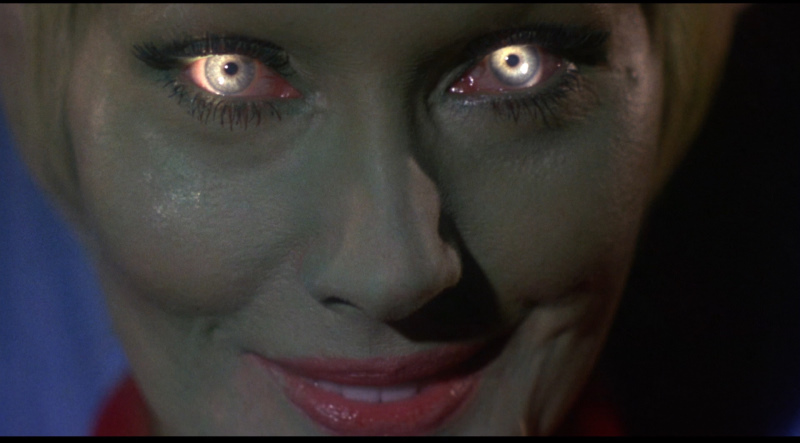 The eyes will have it!
The eyes will have it!
Carmine calls Sherlock who tells him to man-up because Queenie is more important than a couple of underlings. There is an ominous implication that the loss of a couple more underlings named Carmine and Judi would not phase Sherlock one bit. ‘Bring her in, unharmed,’ he orders. They shoe lace her up again.
Got it? Yep. She is free again and has eyes for Carmine. He is pasta in her hands and she is about to dine when…..
Judi crashes the party, belts her, and scratches Queenie’s shoulder. Queenie runs off in a snit. Carmine regains such consciousness as he has. Slugger Judi dusts her knuckles.
Unarmed Judi and Carmine set off to find her. Dumb, but turns out Queenie is royalty and green-bled to death. That very big word ‘haemophilia’ was used much to the annoyance of the fraternity brothers who reached for the aspirin. Evidently all royals are bleeders. Hence the title ‘Queen of Blood.’
They speculate that Queenie was a telepath who could control men, but not women. The fraternity brothers scoffed at that conclusion. Oola, who was green, had no need of telepathy to control them.
They land and Sherlock is happy enough with an autopsy. The end.
That Kingie might come in search of Queenie does not cross a page of the script. That they have been party to the death of the first two aliens they have met gives no pause for remorse. Instead we have the eggs she has hidden on board, which Sherlock wants for an omelet. She is a queen in another way, a Queen Bee or a Queen Ant. That explains her hunger. Yeah, right.
It was marketed under several other titles to catch unwary theatregoers, including ‘Planet of Blood,’ ‘Planet of Terror,’ ‘Planet of Vampires,’ and ‘The Green Woman.’ None of it takes place on a planet; another triumph from the marketing department. Since there is only one, the plural is also erroneous. Green, yes, that is conceded.
Get this, jaded Reader: Not only does no one deprecate the woman astronaut, but she saves the day. Go girl!
Moreover, no one smokes. In era when an actor could not play a scientist without a pipe there are no pipes, and no ciggies either.
The alien space ship scenes were cut from a Russian Sy Fy film and pasted into this one. That inserting was often done in Roger Corman productions, but in this case it was well done, which was not often done in Roger Corman productions. The lighting, set design, and camera work is such that the seams do not show. Curtis Harrington was the director and he made maximum use of these aspects to create an eerie, mysterious, and alien atmosphere.
He later directed Debbie Reynolds, Simone Signoret, Katherine Ross, and Shelly Winters in other films. Impressive. He often worked in television. The black widow is a theme in a number of his other works, some of which he wrote, as he did this title. He wrote the story around the available footage from the Soviet film, whereas in most Corman productions the Soviet footage was shoe-horned into a story that was already written or even filmed, and it always showed.
Carmine had his first role in 1954, and he is still at it with a 2018 credit and 200 others in between. Those monkey glands must work a treat. His reputation remains as, hmm, someone with interesting lifestyle choices even by Hollywood standards. Johnny Depp is a homeboy in comparison.
This film was made simultaneously with another Roger Corman production, ‘Voyage to the Prehistoric Planet’ (1965), also derived from cuttings of the same Russkie movie, reviewed elsewhere on this blog. Keeping his white coat on and clipboard in hand, Sherlock walked from one side of the set to the other to do his lines for the other film. The man was the consummate professional, doing two roles in two different movies at once. Curtis Harrington directed that, too, but chose a pseudonym to protect the guilty.
Corman bought Russian Sy Fy films for two reasons, and in this order. First, they were cheap. Second they had superior special effects, though these were often mangled when inserted into Corman productions. The word on the internet street is that in 1950s when the Space Race began, some wits in Soviet policy decided to enthuse the populace for space with Sy Fy films and budgeted for the special effects. That is what caught Corman’s eye.
Month: June 2018
‘Jungle Woman’ (1944)
IMDb meta-data: 1 hour and 1 minute to treacle time, rated an astounding 5.2 by 277 masochists.
Verdict: a creature feature devoid of both.
Universal Studios broke the gender barrier in creature features with a trilogy of wild, captive, and jungle women films. This is the second instalment on this mercifully short-lived franchise.
The first was ‘Captive Wild Woman’ (1943), reviewed elsewhere on this blog. This earlier film was a masterclass in making something from the nothing on a micro-budget. A third of that film’s one hour time was clipped from a still earlier Universal film, ‘The Big Cage’ (1933). But director Edward Dymtryk did it so well, there was no distraction. Not so here.
About a quarter of the runtime of this treacle is excerpted from ‘Captive Wild Woman’ (which excerpts include scenes from ‘The Big Cage’ as explained above). In this movie the underside of the weave shows. To accommodate this earlier material much of this script is set out in flashbacks. Long before Roger Corman this studio had learned to plagiarise itself.

Evelyn Ankers is top billed but has but one opening scene of three minutes and then disappears. In fact that scene is a lift from ‘Captive Wild Woman,’ recycled here. Ditto Dr Adams. The ever reliable Douglas Dumbrille has one early scene and is gone.
There is no jungle and no woman to speak of, though Acquanetta reprises her role as Cheela the ape come human. This time she speaks. What a mistake that was. Silent, she had mystery. Speaking she had adenoids.
A screen shot of Cheela from the earlier film is included for, the fraternity brothers timed it, five seconds, and that is it. That does not a creature feature make.
Not only is there no creature in this feature, there is also no mad scientist. In the earlier film John Carradine filled this vacuum perfectly. Here we have a kindly doctor who by circumstance finds the ape woman on his rounds. J. Carrol Naish brings a calm and reflective intensity to this role, which in other material would have been compelling, but here, it is undercut by the crude simplicity of the sieved pot boiler in which the role is immersed.
Universal had made a place for itself in cinema-land in the 1930s with horror films. Indeed some pundits credit it with establishing that genre in films with such masterpieces as ‘Frankenstein’ (1931). In this franchise it previously broached the gender line with ‘Bride of Frankenstein’ (1935) where Elsa Lancaster stole that show.
How low could Universal go? Well, that will be seen in the third movie in this Jungle franchise, ‘Jungle Captive’ (1945). Scuba gear maybe required.
‘109 East Palace: Robert Oppenheimer and the Secret City of Los Alamos’ (2006) by Jennet Conant.
Good Reads meta-data Rating: 4 from 1,234 votes. 425 pages.
Verdict: not the biography of Oppenheimer I was looking for.
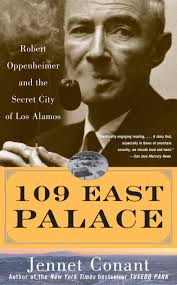
The development of Atomic Bomb in twenty-seven months on a mesa in New Mexico is quite a story from theory to practice.
The book offers a near day-by-day account mostly of the administrivia of Los Alamos. Largely told through the subsequent recollections of the office manager of the project, located at 109 East Palace Street in Santa Fe, Dorothy McKibben, who adored Oppenheimer. In silence the author credits Dorothy with a remarkable and flawless memory for conversations because she recalled them years later without the benefit of diary or any other written record from the time.
Only 40% of the way through the book did this reader notice any discussion of the engineering, technical, and scientific endeavours. Apart from listening to complaints about laundry and indulging the pranks of immature minds, Oppenheimer never comes into focus in these pages despite his image on the cover and his name in the title.
These impressions are not helped by the slangy style of exposition and the credulity of the author who takes as fact whatever a favoured source said. This reader got no sense that any assertions were double checked. In addition, facts were scarce. I never did get an idea how big the operation was. Only more than half way through are some numbers mentioned, e.g., 3,000 but given the one-eyed perspective of the author I was unsure who was included in that number.
I said one-eyed because the author is always on the side of the scientists, say when they complained about secrecy and security and seems repeatedly to belittle both the GIs who built most of the set-up and the intelligence agents who censored the mail, kept strangers away, demanded to see passes, and so on.
The immaturity of many of the scientists involved is breath-taking, the more so later when some of the same individuals took it upon themselves later to pontificate about the use of the Bomb. Even the fraternity brothers paled at some of their antics. While some of these draft-exempt scientists were planning panty-raids, in 1944 the Pentagon was sending 2000 yellow telegrams a day to mothers and wives.
Most of the Europeans on the project were more serious because Naziism was a reality to them, and not a newsreel. Indeed so focused were they on Germany that when the war ended in Europe many wanted to quit the project. They had so quarrel with Japan since it had no bomb and no prospect of one. Their goal was to get to the Bomb before the Naziis did.
At this point Oppenheimer was, it seems, crucial in motivating them to work ever harder, far from quitting. That he did this is, however, not explained by anything in his nature or character developed earlier in the book. Yet it was certainly crucial and he was the one who did it. We did get earlier the grudging admission by one of his many critics that Oppenheimer, despite his dilettantish pre-war mien, had proven adept at getting all those (egotistical) scientists to talk to each other. No mean feat that. More exposition of how that was managed would be welcome.
There are many assertions that Oppenheimer was attractive to women, that he had blue eyes, and a confident manner. So what? There are many of these and none of them built the bomb. There had to be more than these superficial descriptions to explain his singular achievements as noted in the paragraph above. Using the word ‘charisma’ is neither analysis nor explanation.
Oppenheimer is the centre of the book, even if he is seldom on the page. His own disregard of security is numbing. Why did he do those things that later would look so damning? My own conclusion is hubris. In the first instance Oppenheimer was sure, because he was so much smarter than everyone else, he would never make a mistake and give anything away, no matter to whom he talked. Second, he was likewise sure he would always be able to talk his way out of suspicion. So he thought.
Instead he simply called attention to himself again and again, and it stuck. And he created a pattern that was at best reckless and at worst sinister.
That a skilled intelligence agent could learn much from what is not said, or from the lies told, these are tricks of the spy trade that Oppenheimer never considered, since his hubris meant he never thought anyone else could out think him.
His hubris had another strand. After the war, he could have gone back to Cal and time might have healed some of the wounds, but instead he haunted Washington, putting himself forward as Mr. Atom, advocating committees, and himself as a member. He was hard to miss. He had come to view himself as indispensable. Maybe he was, but the effect, given the two strands already mentioned, was to make himself into a target. He seems always to think he was an invulnerable Achilles.
While the author mocks the efforts of the security officers with the fact that they missed Klaus Fuchs, who was indeed passing information to Them, she seems to fail to see that the security officers were right. There were leaks. Fuchs, by the way, was not the only source of leaks but the most well placed.
Nor does the author indicate any effort at ascertaining, say by visiting the National Archives, whether German agents were active in the matter. Still less other Soviet agents who monitored Oppenheimer when he was away, as was often, from Los Alamos.
The drama accelerates quickly in the middle of the book, and we read less about bickering, picnicking, and laundry, when it is time to test Trinity.
 The Trinity test at 10 seconds after detonation.
The Trinity test at 10 seconds after detonation.
Though here, as always, is a squabble about the name which is dutifully recorded by the author.
Yet she sits on the fence about the use of the bomb. She quotes estimates of causalities of the projected November 1946 invasion of Japan and then in a rare footnote says this figure might have been fabricated. That is quite an accusation to make in a throwaway footnote. It is a fact, by the way, that the Pentagon planners had begun preparations for 500,000 American casualties from an invasion of Japan. It had also contracted for 10,000 yellow telegrams a day.
What president would not use the bomb in preference to such a toll?
Given the many uncertainties involved with the Bomb, the only way to go was to use it. Why? What demonstration would convince the Japanese? Blow up an uninhabited island? Not likely to be convincing. They would suspect a trick. That the Bomb would even work was always in doubt. If it did not work on the island, then it would serve no purpose but waste the weapon and do so in a way that nothing could be learned from the failure. And a failed demonstration would queer the pitch for another demonstration.
Moreover, the weapons grade uranium was so scarce and hard to use that wasting a Bomb on an island might mean another one was not available for some time. Furthermore transporting the Bomb to the Pacific was hard. The cruiser USS Indianapolis that delivered the first Bomb was sunk by a Japanese submarine a few days after completing that mission. (See ‘Jaws’ [1975] for confirmation.) Would the next ship transporting a bomb be sunk with it on board?
The prospect of besieging Japan into surrender was considered and rejected on many grounds. The Soviet Union would nibble away at Japanese weaknesses, while leaving the hard work to the United States. Little material support would come from a depleted England. The Chinese would turn full-time to fighting among themselves. During a prolonged siege the young, the women, and the civilians would suffer most as scarce resources would go to the defence forces. The result would be to cripple Japan for a generation or more without discrediting or displacing the war party.
Douglas McArthur always preferred manoeuvre and surprise to direct attacks, but he saw no other way in 1945.
The zealots in Japan were ready to fight on, and the example of Okinawa frightened everyone in the Pentagon. They would fight to the death unless the Emperor ordered them not to do so. To get to that order, the zealots had to be completely undermined. Hence the first big bang. It was made all the more dramatic for being a single aircraft. Japanese air defence spotted it but did not respond to its approach, assuming it was photographic reconnaissance.
In the two-day interval allowed for the Japanese to assess the destruction of Hiroshima, we now know what was unknown in D.C. at the time, that there was an abortive coup d’état, but it came to nothing. The second bomb, by the way, was not targeted on Nagasaki but bad weather took it there.
Back to the book in hand, the author seems to relish name dropping, as if everyone associated with a notable university is somehow a superior person. I could only put this down to an ingrained snobbery. This attitude shows also in the way those who were not blessed with such illustrious associations are portrayed. General Lesley Groves is one example. He, more often than not, is portrayed just one step away from Groucho Marx. Yet he oversaw an unprecedented and wide-spread effort of which Los Alamos was only a part, but he gets barely any credit, until, perhaps at the urging of editor, some condescending good words are applied toward the end. But overall the tone is, how could this nobody criticise these men from prestigious universities. Yes, Groves had an MIT degree, but he was but a student there, and in those days, by the way, MIT did not have the caché it does now, partly thanks to graduates like Groves.
Yet the text shows he was right about many things, like the irresponsibility of some of the scientists, about the need for secrecy, about the dubious nature of the undertaking, about the subsequent need to explain and justify everything done, and even the spies. More importantly, that he stuck by Oppenheimer as the right man for the job even though he did not like him.
The author has an admirable list of titles on related subjects.
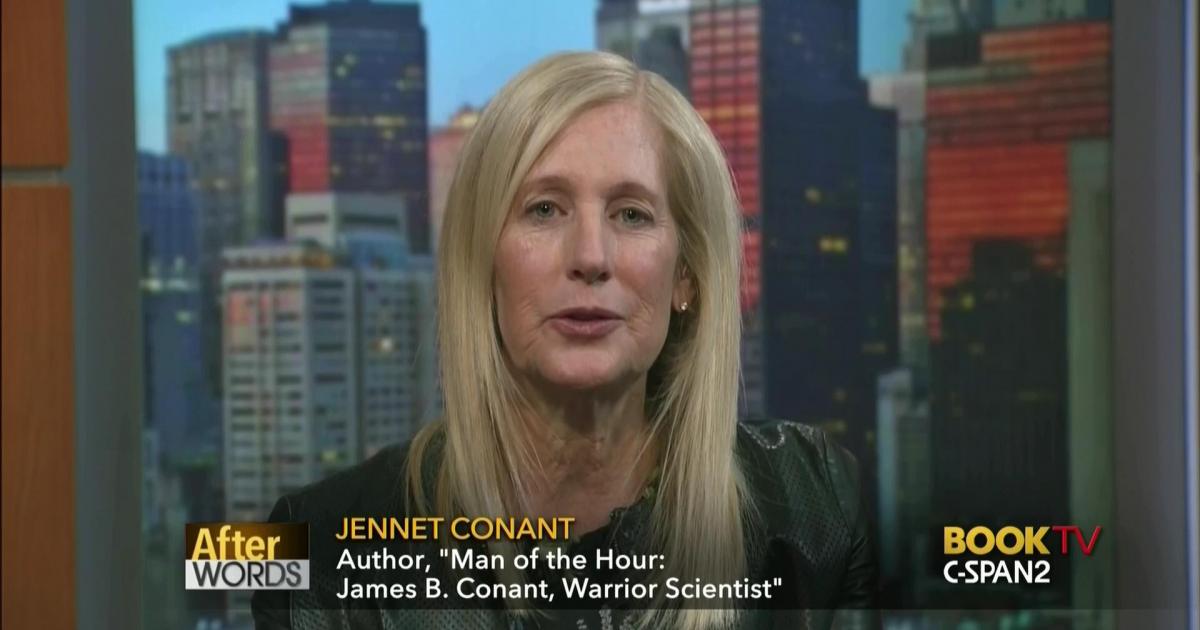
So be it. Not for me. Reading this book but confirms my cynicism about the world of New York City publishing.
